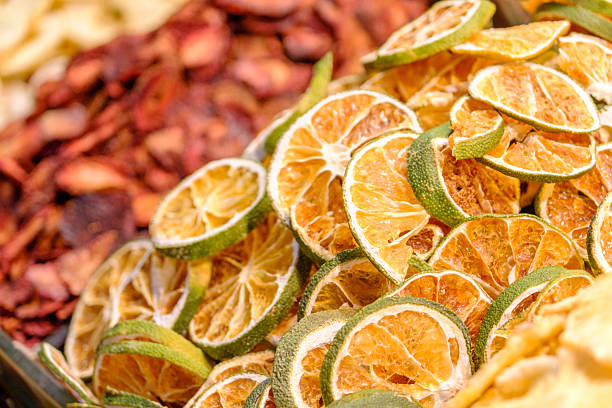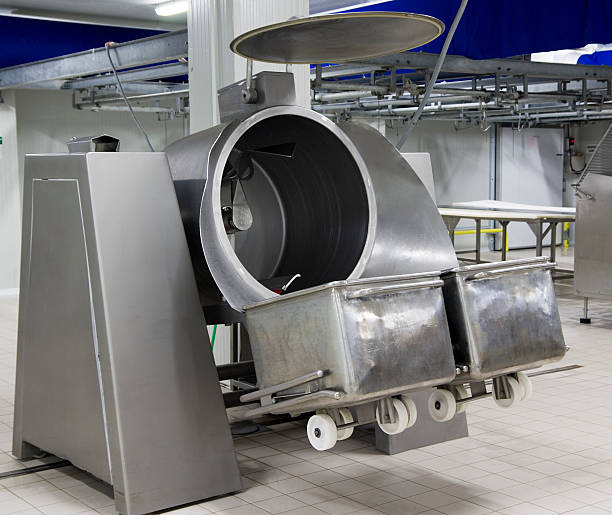Introduction – Current State of Play: The Dehydrated Fruits Sector in Poland
Poland’s dehydrated fruits market is in the spotlight, and not just for its quality produce. In recent months, the sector has been navigating a perfect storm of environmental, logistical, and economic changes that are reshaping the landscape in real-time.
Let’s start with the weather. In 2024, Poland was hit hard by spring frosts and extended droughts. This double blow led to dramatic drops in fruit yields. For instance, cherry harvests plummeted by around 30%, and berries like raspberries and blackcurrants saw declines of 35% and 28%, respectively. That’s a big deal if you’re sourcing fruits for dehydration — smaller harvests mean tighter supply and higher prices.
On top of that, cold storage capacity has become a hot topic. With perishable exports on the rise and new investments in advanced cold chain logistics (like NewCold’s high-tech warehouse in Kutno), Poland is stepping up its game. These upgrades are crucial for dehydrated fruits, which rely on stable storage environments to maintain quality.
Export-wise, Poland continues to flex its muscles. The country remains a top exporter of processed fruits, including frozen and dehydrated varieties, with Germany being a top buyer. Meanwhile, inflation hasn’t slowed consumer demand — particularly for health-forward snacks like dried fruits. That’s good news for brands banking on the long shelf life and nutritional perks of these products.
In short, Poland’s dehydrated fruits market is adapting to rapid changes, and businesses need to stay nimble. Luckily, platforms like Freshdi help buyers stay ahead by offering verified supplier data, RFQ trend analysis, and real-time insights.
Deep Dive – Breaking News: Critical Updates & Their Effects
So what’s really going on under the hood of Poland’s dehydrated fruits market? Here’s a breakdown of the latest developments and what they mean for suppliers, buyers, and everyone in between.
Market Growth on the Horizon
Despite the weather challenges, the market is projected to grow by over USD 125 million by 2028. That’s not just a bounce-back — it’s a leap forward, thanks to health-conscious consumers who crave natural, convenient, and nutrient-rich snacks.
Shifting Tastes and Product Innovations
Dried berries like cranberries, blueberries, and blackcurrants are leading the pack, making up more than 35% of the market. But we’re also seeing rising demand for exotic and tropical fruits — mangoes, pineapples, and oranges are gaining traction fast.
Why? Because today’s consumers want variety and functionality. They’re tossing dried fruits into cereal, snacking on them mid-commute, and using them in baking. Around 40.9% of Polish consumers snack on dried fruits weekly, and 30% sprinkle them into breakfast multiple times a week.
Retail and E-Commerce Channels Heating Up
Traditional retail still dominates, with supermarkets like Biedronka, Lidl, Dino, and Topaz leading the charge. But e-commerce is quickly catching up. Platforms like Amazon, Carrefour, and Walmart are expanding their dried fruit offerings online, creating more opportunities for globally oriented suppliers.
Tech Meets Taste: Dehydration Innovations
Between 2023 and 2025, nearly 55% of manufacturers in Poland introduced new freeze-dried fruit options. Another 47% rolled out hybrid dehydration methods that combine microwave and freeze-drying for better efficiency and flavor retention.
This isn’t just science for fun. It’s a game-changer for shelf life, taste, and texture — all essential for meeting global quality standards.
Investors Are Paying Attention
Startups in the dehydrated fruit space are attracting serious capital, especially those focused on online-exclusive brands. Approximately 63% of these startups secured funding for digital-first distribution models, highlighting a trend toward innovation and agility.
Cultural Appeal Still Matters
Let’s not forget tradition. In Poland, dried fruits are a staple during holidays like Christmas and Easter. Traditional dishes often feature a medley of dried plums, apples, pears, and apricots — giving these products significance beyond just nutrition.
Top 10 Verified Dehydrated Fruits Suppliers in Poland – Adapting to Today’s Market
These ten suppliers have stood out in Q3 of 2025 for their resilience, innovation, and customer satisfaction. Verified through Freshdi, these companies exemplify the best Poland has to offer.
-
LYOVIT PRZEDSIEBIORSTWO PRODUKCYJNO-USLUGOWO-HANDLOWE
Specializes in freeze-dried fruits with a wide export network and robust certifications. -
MLB BIOTRADE
Known for organic dehydrated fruits and clean-label product lines. -
Biosfera Sp.Z O.O.
Focuses on eco-sustainable production and has strong retail partnerships across the EU. -
LYO CENTER
A forerunner in hybrid dehydration technology and innovation-oriented solutions. -
Katolik Group
Offers a large range of traditional and exotic dried fruits with scalable capacity. -
HR Services & Consultants Sp Z Oo
Provides tailored sourcing solutions and data-driven fulfillment services. -
EEC-Poland Ltd
Specializes in soft-dried strawberries and premium quality fruit assortments. -
Lider Trade Sp. Z O.O.
A reliable player in bulk and wholesale dried fruit exports. -
Agro Bio Product Sp. Z o.O.
Focuses on certified organic dehydrated fruit lines for EU and U.S. markets. -
BAKALIOWE SMAKI
Offers artisanal dried fruit products with high traceability and quality control.
Dynamic Ranking Note:
Keep in mind, supplier rankings on platforms like Freshdi are dynamic and may change monthly or quarterly based on performance metrics such as buyer reviews, RFQ activity, and export volume. Be sure to check for the latest “Supplier of the Month” or “Top Exporter” designations on Freshdi.
Market Navigation – Strategic Responses to Today’s Dehydrated Fruits Landscape in Poland
With climate pressures and evolving consumer habits, businesses sourcing dehydrated fruits from Poland need to be strategic and flexible. Here’s how:
1. Source Diversification is Key
Given the unpredictable weather patterns, it’s risky to rely solely on one region or fruit type. Diversifying supply sources — both geographically and by product — can help mitigate disruptions.
2. Focus on High-Demand Products
Berries continue to dominate, but tropical fruits are gaining ground. Offering a mix of traditional and trending fruits can help cater to broader markets.
3. Embrace E-Commerce Channels
With more consumers buying online, it’s worth investing in packaging, branding, and logistics that appeal to the digital shopper. Suppliers integrated with Freshdi often offer digital catalogs and streamlined RFQ submissions.
4. Leverage Tech-Enhanced Products
Freeze-dried and hybrid-dried fruits are more shelf-stable and retain better flavor. Sourcing from manufacturers using these methods can give your business a qualitative edge.
5. Audit Cold Chain Capabilities
Make sure your suppliers are aligned with the new cold storage standards. Ask about facility upgrades and logistics partners. Freshdi can help you verify these capabilities through supplier profiles.
Conclusion – Key Takeaways for Businesses in a Rapidly Evolving Market
Poland’s dehydrated fruits industry in Q3 2025 is a study in resilience and reinvention. From weather-induced shortages to tech-fueled innovations, the sector is evolving fast. Businesses that want to stay competitive need to be informed, agile, and connected to trusted suppliers.
Checklist for Smart Buyers:
- ✅ Monitor crop yield reports and weather forecasts closely.
- ✅ Prioritize suppliers with verified certifications and modern dehydration tech.
- ✅ Diversify your product portfolio to include berries and tropical fruits.
- ✅ Explore online sales channels and invest in shelf-ready packaging.
- ✅ Use platforms like Freshdi to access updated RFQ trends, dynamic supplier rankings, and direct communication channels.
Platforms like Freshdi are more than just directories. They empower buyers with real-time data, supplier verification, and trend forecasting — everything you need to make smart sourcing decisions in a fast-moving market.
FAQs
1. What are the most popular dehydrated fruits in Poland right now?
Dried berries like cranberries, blueberries, and blackcurrants lead the pack, followed by traditional options like apples, pears, and plums.
2. How has the weather affected Poland’s dehydrated fruit supply?
Adverse weather in 2024 reduced yields significantly, especially for cherries and berries, causing supply constraints and price hikes.
3. Are Polish suppliers adopting new dehydration technologies?
Yes, many are using advanced methods like freeze-drying and hybrid microwave-freeze drying to enhance product quality and shelf life.
4. Where can I find verified dehydrated fruit suppliers from Poland?
Freshdi is a reliable B2B platform offering verified supplier profiles, RFQ trends, and dynamic rankings.
5. What should I watch for when choosing a Polish dehydrated fruit supplier?
Look for certifications, cold chain capabilities, technology adoption, and customer reviews — all of which are accessible through Freshdi.
References
- Impact of Weather Conditions on Fruit Production in Poland – FreshPlaza
- Cold Storage Investment in Poland – GCCA
- Export Performance of Polish Fruits – Trade.gov.pl
- Poland Dried Fruits Market Analysis – Bonafide Research
- Dehydrated Fruits & Vegetables Market Trends – IndustryResearch.biz
- Market Dynamics and Investment Trends – Wicz.com
- Polish Blueberry Demand and Cultural Usage – FreshPlaza





